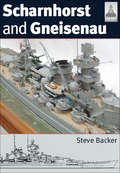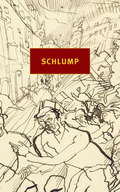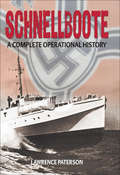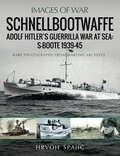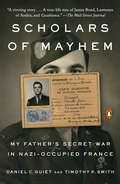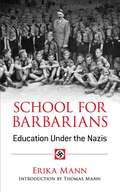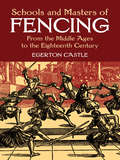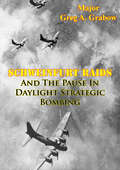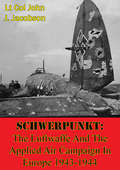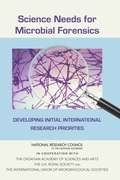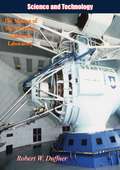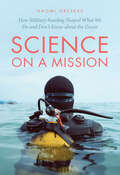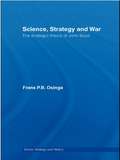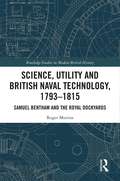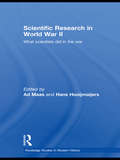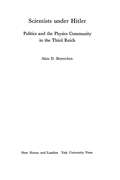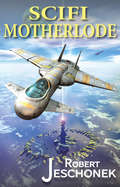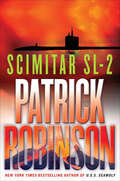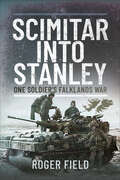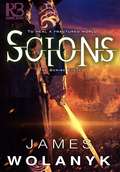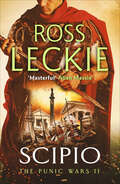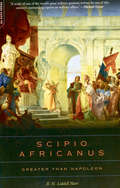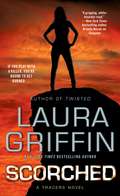- Table View
- List View
Scharnhorst and Gneisenau: Shipcraft 20 (ShipCraft #20)
by Steve BackerA history of the service careers and advice on making models of &“perhaps the most successful of the German battleships of the Second World War&” (History of War). The ShipCraft series provides in-depth information about building and modifying model kits of famous warship types. Lavishly illustrated, each book takes the modeler through a brief history of the subject class, highlighting differences between sister-ships and changes in their appearance over their careers This includes paint schemes and camouflage, featuring color profiles and highly-detailed line drawings and scale planes. The modeling section reviews the strengths and weaknesses of available kits, lists commercial accessory sets for super-detailing of the ships, and provides hints on modifying and improving the basic kit. This is followed by an extensive photographic gallery of selected high-quality models in a variety of scales, and the book concludes with a section on research reference books, monographs, large-scale plans and relevant websites. The two German ships which form the subject of this volume were among the first products of rearmament under Hitler. For political reasons they were neither as large nor as well armed as foreign equivalents, but they were very fast, which led them to be described as battlecruisers in some quarters. They enjoyed an adventurous war, both surviving heavy damage, before Scharnhorst was sunk in an epic gun battle off the North Cape, while Gneisenau succumbed to heavy air attack.&“For both vessels, the book gives details of modifications carried out, while a wealth of clear and detailed photographs and line drawings illustrate the ships themselves, as well as items of equipment.&” —Ships Monthly
Schindler's Ark: The Booker Prize winning novel filmed as ‘Schindler's List'
by Thomas KeneallyWinner of the Booker Prize and international bestseller, made into the award-winning film Schindler's List.In the shadow of Auschwitz, a flamboyant German industrialist grew into a living legend to the Jews of Cracow. He was a womaniser, a heavy drinker and a bon viveur, but to them he became a saviour. This is the extraordinary story of Oskar Schindler, who risked his life to protect Jews in Nazi-occupied Poland and who was transformed by the war into a man with a mission, a compassionate angel of mercy.
Schlump
by Jamie Bulloch Volker Weidermann Hans Herbert GrimmAn NYRB Classics OriginalSeventeen-year-old Schlump marches off to war in 1915 because going to war is the best way to meet girls. And so he does, on his first posting, overseeing three villages in occupied France. But then Schlump is sent to the front, and the good times end.Schlump, written by Hans Herbert Grimm, was published anonymously in 1928 and was one of the first German novels to describe World War I in all its horror and absurdity, and it remains one of the best. What really sets it apart is its remarkable central character. Who is Schlump? A bit of a rascal and a bit of a sweetheart, a victim of his times, an inveterate survivor, maybe even a new type of man. At once comedy, documentary, hellhole, and fairy tale, Schlump is a gripping and disturbing book about the experience of trauma and what the great critic Walter Benjamin, writing at the same time as Hans Herbert Grimm, would call the death of experience, since perhaps if anything goes, nothing counts.
Schnellboote: A Complete Operational History
by Lawrence Paterson&“A detailed account of the fast patrol boats built and used by the Kriegsmarine during WWII . . . a book for every naval history enthusiast.&”—Firetrench The Kriegsmarine&’s Schnellboote—fast attack boats or S-boats to the Allies—were the primary German naval attack units in coastal waters throughout the Second World War. Operating close to their various bases they became a devastatingly effective weapon in nearly all the Kriegsmarine&’s theatres of war, from the Baltic to the Mediterranean and the Black Sea. It was in the English Channel, however, that they scored their most notable successes, destroying some forty warships and more than one hundred merchant ships. In addition to interception and attack, they were also used for minelaying, landing sabotage troops and general escort duties. There has been, to date, no comprehensive operational history of the S-boat in all the theatres in which it saw service, but due to the relatively small number of units it is possible to recount the duties and fates of each individual craft, and in this new book the author examines the career of each in detail. In addition, operations alongside the commando units of the Kleinkampfverbande are covered, and the smaller S-boats, designed primarily for their use, are described. As the War progressed, S-boats suffered from the increased Allied mastery of the seas and skies but they were a formidable foe right to the end; this new book is the first to do full justice to their record of success. &“An important addition to the body of coastal forces literature, and should be essential reading for anyone interested in the wars of the &‘Narrow Seas.&’&”—Battlefleet
Schnellbootwaffe: Rare Photographs From Wartime Archives (Images of War)
by Hrvoje SpajicThe Schnellbootwaffe was created in the early 1930s, before the Second World War, in concurrence with the regenerated Kriegsmarine. Young officers, most of whom learned their craft in the old Imperial Navy, would now take responsibility for the operational use of these revolutionary vessels. Working with the naval engineers of Lürssen Shipyard, the Germans designed combat weapons that were never surpassed by their opponents. After the first series of Schnellboote were launched, constantly improved versions of these vessels would follow. The Schnellbootwaffe would achieve significant victories for the Kriegsmarine at the beginning of the war by using these vessels in high-level strategies, including a style of guerrilla warfare. The British often call German torpedo boats E-boats, and these fast vessels were a genuine threat not only to coastal trade, but also to the movement of Allied ships after D-Day. Indeed, Admiral Rudolf Petersen's flotillas remained combat-ready until the very end, even after the balance of power was in favour of the Allies. Allied air bombardment of German torpedo boat bases from 1944 onwards failed to destroy the offensive potential of the Schnellboote and their crews. The Allied disaster at Lyme Bay at the end of April 1944 shows how this guerrilla war at sea was still dangerous, even at this stage of the war. The Allied invasion plans were not yet known to the Germans, but Eisenhower learned a great deal from Lyme Bay and the Schnellbootwaffe was still potentially dangerous right until the end of the war. This book tells the fascinating story about these special people, whose pirate spirit and guerrilla style of naval combat is reminiscent of the ancient pirates and their own way of warfare.
Scholars of Mayhem: My Father's Secret War in Nazi-Occupied France
by Daniel C. Guiet Timothy K. SmithThe astonishing untold story of the author's father, the lone American on a four-person team of Allied secret agents dropped into Nazi-occupied France, whose epic feats of irregular warfare proved vital in keeping German tanks away from Normandy after D-Day.When Daniel Guiet was a child and his family moved country, as they frequently did, his father had one possession, a tin bread box, that always made the trip. Daniel was admonished never to touch the box, but one day he couldn't resist. What he found astonished him: a .45 automatic and five full clips; three slim knives; a length of wire with a wooden handle at each end; thin pieces of paper with random numbers on them; several passports with his father's photograph, each bearing a different name; and silk squares imprinted with different countries' flags, bearing messages in unfamiliar alphabets. The messages, he discovered much later, were variations on a theme: I am an American. Take me to the nearest Allied military office. You will be paid.Eventually Jean Claude Guiet revealed to his family that he had been in the CIA, but it was only at the very end of his life that he spoke of the mission during World War II that marked the beginning of his career in clandestine service. It is one of the last great untold stories of the war, and Daniel Guiet and his collaborator, the writer Tim Smith, have spent several years bringing it to life. Jean Claude was an American citizen but a child of France, and fluent in the language; he was also extremely bright. The American military was on the lookout for native French speakers to be seconded to a secret British special operations commando operation, dropping clandestine agents behind German lines in France to coordinate aid to the French Resistance and lead missions wreaking havoc on Germany's military efforts across the entire country. Jean Claude was recruited, and his life was changed forever. Though the human cost was terrible, the mission succeeded beyond the Allies' wildest dreams.Scholars of Mayhem tells the story of Jean Claude and the other three agents in his "circuit," codenamed Salesman, a unit of Britain's Special Operations Executive, the secret service ordered by Churchill to "Set Europe ablaze." Parachuted into France the day after D-Day, the Salesman team organized, armed, and commanded an underground army of 10,000 French Resistance fighters. National pride has kept the story of SOE in France obscure, but of this there is no doubt: While the Resistance had plenty of heart, it was SOE that gave it teeth and claws. Scholars of Mayhem adds brilliantly to that picture, and further underscores what a close-run thing the success of the Allied breakout from the Normandy landings actually was.
School for Barbarians: Education Under the Nazis
by Thomas Mann Erika MannPublished in 1938, when Nazi power was approaching its zenith, this well-documented indictment reveals the systematic brainwashing of Germany's youth. The Nazi program prepared for its future with a fanatical focus on national preeminence and warlike readiness that dominated every department and phase of education. Methods included alienating children from their parents, promoting notions of racial superiority instead of science, and developing a cult of personality centered on Hitler. Erika Mann, a member of the World War II generation of German youth, observed firsthand the Third Reich's perversion of a once-proud school system and the systematic poisoning of family life. This edition of her historic exposé features an Introduction by her father, famed author and Nobel laureate Thomas Mann.
Schools and Masters of Fencing: From the Middle Ages to the Eighteenth Century (Dover Military History, Weapons, Armor Ser.)
by Egerton CastleThe standard reference on historical swordsmanship since its 1885 publication, this volume is still widely considered the definitive work on fencing history and the art of European swordsmanship. The author, Egerton Castle, traces fencing from its roots in the unschooled brawling of the Middle Ages to its latter-day precision and refinement, focusing particularly on the 16th-century development of the rapier and the weapon's popularity in Renaissance Italy, where Italian masters founded the modern art of swordsmanship.Envisioning the history of the sword as a history of humanity, the author proposes that the changes in modes of fencing corresponded to changes in manners. The rough, untutored fighting of the Middle Ages, for example, mirrored the supremacy of brute force in social and political life. The more subtle Renaissance era led to the ascendancy of the rapier and dagger, weapons of vicious elegance rather than sturdy brutality. Subsequent years saw a dwindling incidence of dueling, the decline of the sword to an article of gentlemen's apparel, and the reduction of swordsmanship to a courtly accomplishment akin to dancing."The subject is full of interest," the author notes in his Introduction, "not only for the fencer who looks upon his favourite pastime as a science, but also in a high degree for the novelist, the painter, the actor, and the antiquarian." All will welcome the return of this abundantly illustrated and long-out-of-print work.
Schweinfurt Raids And The Pause In Daylight Strategic Bombing
by Major Greg A. GrabowAvid readers of WWII air combat will find the Eighth AAF's strategic bombing mission #84 (the Schweinfurt-Regensburg raid on Aug. 17th, 1943) and mission #115 (the Schweinfurt raid on Oct. 14th, 1943) to be tremendous setbacks to the daylight strategic bombing campaign of Germany. As a result of the heavy losses the Luftwaffe inflicted upon Eighth Bomber Command's heavy bombers, the daylight strategic bombing campaign was halted for over four months. The Eighth AAF could not sustain such heavy losses, in both aircraft and aircrew, and remain an effective force. During the halt in the daylight strategic bombing campaign, only targets within fighter escort range were selected so Eighth Bomber Command could receive replacement crews, upgraded aircraft, revise its strategic bombing tactics, and review its daylight strategic bombing doctrine....Initially, the heavy losses incurred during the Aug. Schweinfurt-Regensburg raid were explained away as justified due to the "heavy" damage to both targets, the number of German fighters "shot down," and the weather which prevented 300 heavy bombers from being sent as one force - the number required for self-sustainment on deep penetration missions. This was the same mood immediately after the Oct. Schweinfurt raid but changed drastically once monthly loss statistics were released and further examination forced the USAAF leadership into a rude awakening: unescorted bombers took seven times the loss plus two-and-a-half times the damage and the final assessment revealed Eighth Bomber Command experienced the loss of one-third of its heavy bombers each month...What were the implications? America's daylight strategic bombing campaign came within limits of defeat but the Eighth AAF was able to pause, adjust its strategic bombing doctrine, and obtain its objective of neutralizing the Luftwaffe and destroying German wartime industry.
Schwerpunkt: The Luftwaffe And The Applied Air Campaign In Europe 1943-1944
by Lt Col John J. JacobsonAttaining air superiority over the German Air Force in 1944 did not in and by itself win the war in Europe, but it did make possible those operations that did. Had the Luftwaffe been able to maintain air superiority over the Continent from 1943-1944, the successful ground invasion at Normandy never would have taken place. Consequently, with his air force in control of the skies over the battlefield, Hitler would have been in a much better position to consolidate his territorial gains and negotiate a favorable peace with the Allies.The thesis of this paper is that the Luftwaffe was Germany's strategic center of gravity in 1944 and it was the recognition of this, combined with the Allied leadership's use of air power in accordance with the principles of war, that gave the U.S.-British alliance its war-winning strategic advantage. Defeating the Luftwaffe and winning air superiority over the skies of Europe stripped Germany of the ability to protect itself and was the key event that led to the eventual collapse of Germany's armaments industry and military.
Science Needs for Microbial Forensics: Initial International Research Priorities
by Committee on Science Needs for Microbial Forensics: Developing an Initial International RoadmapMicrobial forensics is a scientific discipline dedicated to analyzing evidence from a bioterrorism act, biocrime, or inadvertent microorganism or toxin release for attribution purposes. This emerging discipline seeks to offer investigators the tools and techniques to support efforts to identify the source of a biological threat agent and attribute a biothreat act to a particular person or group. Microbial forensics is still in the early stages of development and faces substantial scientific challenges to continue to build capacity. The unlawful use of biological agents poses substantial dangers to individuals, public health, the environment, the economies of nations, and global peace. It also is likely that scientific, political, and media-based controversy will surround any investigation of the alleged use of a biological agent, and can be expected to affect significantly the role that scientific information or evidence can play. For these reasons, building awareness of and capacity in microbial forensics can assist in our understanding of what may have occurred during a biothreat event, and international collaborations that engage the broader scientific and policy-making communities are likely to strengthen our microbial forensics capabilities. One goal would be to create a shared technical understanding of the possibilities - and limitations - of the scientific bases for microbial forensics analysis. Science Needs for Microbial Forensics: Developing Initial International Research Priorities, based partly on a workshop held in Zabgreb, Croatia in 2013, identifies scientific needs that must be addressed to improve the capabilities of microbial forensics to investigate infectious disease outbreaks and provide evidence of sufficient quality to support legal proceedings and the development of government policies. This report discusses issues of sampling, validation, data sharing, reference collection, research priorities, global disease monitoring, and training and education to promote international collaboration and further advance the field.
Science and Technology: The Making of the Air Force Research Laboratory
by Robert W. DuffnerChief of the Laboratory's history office in Albuquerque, Duffner traces how the US Air Force consolidated 13 separate laboratories into one. He begins with a discussion of why the decision was made, then explores how the plan was implemented in the mid-1990s.The thought of consolidating laboratories was not new. Over the last decade, this idea had grown out of the Packard Commission 's blue-ribbon study (begun in 1985) that looked at ways to operate the Department of Defense (DOD) in a more efficient and economical manner. David Packard, a former undersecretary of defense, headed a high-level team of investigators that focused on four core areas that were candidates for change: national security planning and budgeting, military organization and command, acquisition organization and procedures, and government-industry accountability. Packard’s final report, A Quest for Excellence (released in June 1986), proposed sweeping reforms, including substantial personnel reductions , to improve efficiency and save money in DOD. President Ronald Reagan directed implementation of the Packard Commission 's recommendations in National Security Decision Directive (NSDD) 219, issued on 1 April 1986. The model acquisition-reform plan called for the establishment of "strong centralized policies through highly decentralized management structures."
Science on a Mission: How Military Funding Shaped What We Do and Don’t Know about the Ocean
by Naomi OreskesA vivid portrait of how Naval oversight shaped American oceanography, revealing what difference it makes who pays for science. What difference does it make who pays for science? Some might say none. If scientists seek to discover fundamental truths about the world, and they do so in an objective manner using well-established methods, then how could it matter who’s footing the bill? History, however, suggests otherwise. In science, as elsewhere, money is power. Tracing the recent history of oceanography, Naomi Oreskes discloses dramatic changes in American ocean science since the Cold War, uncovering how and why it changed. Much of it has to do with who pays. After World War II, the US military turned to a new, uncharted theater of warfare: the deep sea. The earth sciences—particularly physical oceanography and marine geophysics—became essential to the US Navy, which poured unprecedented money and logistical support into their study. Science on a Mission brings to light how this influx of military funding was both enabling and constricting: it resulted in the creation of important domains of knowledge but also significant, lasting, and consequential domains of ignorance. As Oreskes delves into the role of patronage in the history of science, what emerges is a vivid portrait of how naval oversight transformed what we know about the sea. It is a detailed, sweeping history that illuminates the ways funding shapes the subject, scope, and tenor of scientific work, and it raises profound questions about the purpose and character of American science. What difference does it make who pays? The short answer is: a lot.
Science, Strategy and War: The Strategic Theory of John Boyd (Strategy and History)
by Frans P.B. OsingaJohn Boyd is often known exclusively for the so-called ‘OODA’ loop model he developed. This model refers to a decision-making process and to the idea that military victory goes to the side that can complete the cycle from observation to action the fastest. This book aims to redress this state of affairs and re-examines John Boyd’s original contribution to strategic theory. By highlighting diverse sources that shaped Boyd’s thinking, and by offering a comprehensive overview of Boyd’s work, this volume demonstrates that the common interpretation of the meaning of Boyd’s OODA loop concept is incomplete. It also shows that Boyd’s work is much more comprehensive, richer and deeper than is generally thought. With his ideas featuring in the literature on Network Centric Warfare, a key element of the US and NATO’s so-called ‘military transformation’ programmes, as well as in the debate on Fourth Generation Warfare, Boyd continues to exert a strong influence on Western military thinking. Dr Osinga demonstrates how Boyd’s work can helps us to understand the new strategic threats in the post- 9/11 world, and establishes why John Boyd should be regarded as one of the most important (post)modern strategic theorists.
Science, Utility and British Naval Technology, 1793–1815: Samuel Bentham and the Royal Dockyards (Routledge Studies in Modern British History)
by Roger MorrissDuring the French Revolutionary and Napoleonic Wars, the technology employed by the British navy changed not just the material resources of the British navy but the culture and performance of the royal dockyards. This book examines the role of the Inspector General of Naval Works, an Admiralty office occupied by Samuel Bentham between 1796 and 1807, which initiated a range of changes in dockyard technology by the construction of experimental vessels, the introduction of non-recoil armament, the reconstruction of Portsmouth yard, and the introduction of steam-powered engines to pump water, drive mass-production machinery and reprocess copper sheathing. While primarily about the technology, this book also examines the complementary changes in the industrial culture of the dockyards. For it was that change in culture which permitted the dockyards at the end of the Wars to maintain a fleet of unprecedented size and engage in warfare both with the United States of America and with Napoleonic Europe.
Scientific Research In World War II: What scientists did in the war
by Ad Maas Hans HooijmaijersThis book seeks to explore how scientists across a number of countries managed to cope with the challenging circumstances created by World War II. No scientist remained unaffected by the outbreak of WWII. As the book shows, there were basically two opposite ways in which the war encroached on the life of a scientific researcher. In some cases, the outbreak of the war led to engagement in research in support of a war-waging country; in the other extreme, it resulted in their marginalisation. The book, starting with the most marginalised scientist and ending with those fully engaged in the war-effort, covers the whole spectrum of enormously varying scientific fates. Distinctive features of the volume include: a focus on the experiences of ‘ordinary’ scientists, rather than on figureheads like Oppenheimer or Otto Hahn contributions from a range of renowned academics including Mark Walker, an authority in the field of science in World War II a detailed study of the Netherlands during the German Occupation This richly illustrated volume will be of major interest to researchers of the history of science, World War II, and Modern History.
Scientists at War
by Sarah BridgerSarah Bridger examines the ethical debates that tested the U.S. scientific community during the Cold War, and scientists' contributions to military technologies and strategic policymaking, from the dawning atomic age through the Strategic Defense Initiative (Star Wars) in the 1980s, which sparked cross-generational opposition among scientists.
Scientists under Hitler: Politics and the Physics Community in the Third Reich
by Alan D. BeyerchenThe treatment of German physicists under the Nazi regime had far-reaching consequences both for the outcome of the Second World War and for the course of science for decades thereafter. Although this fact has been known from a few famous episodes, it has not been dealt with thoroughly by scholars because it involves two very different disciplines. Political historians have cautiously left it to historians of science, who in turn have shied away from it out of ignorance of the political intricacies. Alan D. Beyerchen here examines this history in detail, basing his research on archival materials in Germany and the United States and on tape-recorded interviews with leading physicists. At least twenty-five percent of Germany's academic physicists who were working in 1933 lost their positions during the Nazi period. The victims -- Jews and other "politically unreliable" persons -- included some of Germany's finest scientists. Those who remained faced opposition not only from Nazi officials but also from certain members of their own community, notably the Nobel laureates Philipp Lenard and Johannes Stark. Beyerchen describes the mechanisms of prejudice, the reaction to the dismissals, and the impact of the "Aryan physics" movement which ultimately failed.
Scifi Motherlode
by Robert T. Jeschonek Luca OleastriIn these pages, Robert T. Jeschonek will take you on a tour of the wildest places and people you've never imagined. Don't miss these 18 edgy, exciting, and surprising science fiction tales from award-winning Star Trek and Doctor Who author Robert T. Jeschonek, a master of unique and unexpected science fiction that really packs a punch. This volume includes 18 stories originally published in three volumes: 6 Scifi Stories, 6 More Scifi Stories, and 6 Scifi Stories Book 3. All 18 of these scifi stories and novelettes are available here for one low price: "The Greatest Serial Killer in the Universe""The Love Quest of Smidgen the Snack Cake""Playing Doctor""Serial Killer vs. E-Merica""My Cannibal Lover""Zinzizinzizinzic""One Awake in All the World""Give the Hippo What He Wants""Teacher of the Century""Off the Face of the Earth""Something Borrowed, Something Doomed""The Cross-Dressing Cosmic Cortez Rubs Off""Star Sex""Messiah 2.0""Lenin of the Stars""The Shrooms of Benares""Beware the Black Battlenaut""Killer Bod"ContentsCollection of 18 stories and novelettes plus a novel previewReviews"Robert Jeschonek is a towering talent." - Mike Resnick, Hugo and Nebula Award-winning author of the Starship series"Robert Jeschonek is the literary love child of Tim Burton and Neil Gaiman." - Adrian Phoenix, critically acclaimed author of The Maker's Song series and Black Dust Mambo"Jeschonek´s stories are delightfully insane, a pleasure to read..." - Fábio Fernandes, Fantasy Book Critic
Scimitar SL-2 (Arnold Morgan #7)
by Patrick RobinsonTerrorists aim to create a mega-tsunami with a nuclear missile in this military thriller by the New York Times–bestselling author of Barracuda 945.Amid the Canary Islands lies the massive crater of the volcano Cumbre Vieja. Scientists theorize that one day the volcano will erupt, triggering a series of events that will lead to a tsunami higher than any in recorded history. This mega-tsunami, with waves of more than 150 feet in height, would ravage Europe, Africa, and ultimately the East Coast of the United States, causing immeasurable loss of life and destruction . . . After Professor Paul Landon, the world’s most prominent geophysicist, is found with a bullet in his head, it is discovered that Ravi Rashood—America’s nemesis and the former SAS officer who is now the head of Hamas—has hatched a diabolical plot against the West: to fire a nuclear-tipped guided cruise missile—Scimitar SL-2, named for the curved sword of the Muslim warrior Saladin—into Cumbre Vieja.U.S. Admiral Arnold Morgan, the retired National Security Adviser, and the Pentagon know it’s not a joke when Rashood, accompanied once again by his wife, the Palestinian Shakira, explodes Mount St. Helens. Morgan knows something even more horrific is to come. But stopping them won’t be easy.Rashood and his Hamas crew are deep in the ocean, in an undetectable sub, which he managed to procure from Russia via communist China. Perhaps worse, a new president, a weak-willed liberal in the White House, worries about taking a stand. As the terrorists’ deadline approaches, the newly implemented and unseasoned National Security team must consider the unthinkable. They must assume the daunting task of organizing a mass relocation of major population centers along the East Coast to safer ground.Morgan once again finds himself at the center of a desperate cat-and-mouse chase, battling his greatest enemy yet as he races against time to locate the silent underwater marauder and stop Rashood before the unimaginable happens . . . With his trademark authentic research and grasp of military hardware, geopolitics, and cutting-edge science, Patrick Robinson is at the top of his game with this tale.Praise for Scimitar S-2“What Robinson does do . . . is tell a great story, and tell it well, and scare the living vinegar out of you along the way. . . . Scimitar S-2may well be the most frightening book you will read all year.” —Bookreporter.com
Scimitar into Stanley: One Soldier’s Falklands War
by Roger FieldIn May 1982, Captain Roger Field, The Blues and Royals, attached to HQ 5th Infantry Brigade, sailed on the Queen Elizabeth 2 as part of the second wave to liberate the Falkland Islands. Surprised by what he saw at Brigade HQ he started writing a diary. His journey took him to Fitzroy as the Argentinean aircraft struck the landing ships Sir Galahad and Sir Tristram. A chance meeting led to him joining the Commanding Officer of 2 Para for the Battle of Wireless Ridge. When the Paras lost the commander of one of their four The Blues and Royals armored cars part way through the battle Roger took command of that Scimitar. He fought the rest of the battle from the turret. Next day his Scimitar was at the very tip of the spear as 2 Para and The Blues and Royals led the victorious charge into Port Stanley; Max Hastings hanging onto the back of his vehicle. ‘Revisionist’ in places and always refreshingly candid, this account is unique as it describes the War from the viewpoint of a staff officer, infanteer and armored vehicle commander. A gripping read.
Scions (The Scribe Cycle #3)
by James WolanykThree years have passed since the devastation of Golyna. Anna, once the maker of immortals, continues to fight the evil she unwillingly created through her rune-carving magic. Secreted away in an isolated mountain monastery, she works as a teacher to young scribes, guiding them toward runes that foster peace rather than endless war. So when the tracker who murdered her brother comes to Anna’s redoubt, begging for his eternal runes to be undone, Anna agrees to grant his wish on one condition—that he aid her in rooting out the remnants of Volna, a genocidal regime bent on destruction. In this brave new world where old foes can become allies, so too can former friends sour into deadly enemies. With the tracker’s help, Anna is propelled into a confrontation with Ramyi, her former apprentice. Grown bitter and disillusioned, Ramyi now wants to lay waste to the world—but not before she completes an apocalyptic ritual that could have dire consequences for all of existence. To stop Ramyi from unleashing chaos, and restore peace to a broken world, Anna must be willing to make the ultimate sacrifice.
Scipio (The Punic Wars #2)
by Ross LeckieThe thrilling story of the greatest general in Roman history.In the name of Rome, Scipio Africanus conquered the hard-won empires of Carthage and of Alexander the Great.Now beset in his old age by the menacing political movements of Cato, Scipio details the epic story of his life, from the earliest days of his education, to the great battles he won in service to his home.Yet all the strands of his remarkable tale are anchored, flowing from and towards the confrontation between him and his great rival, his one and only equal… Hannibal.This novel of love and betrayal recreates the life and times of a military genius who discovers he is only a man, and is perfect for fans of Simon Scarrow, Ben Kane and I, Claudius.Praise for Ross Leckie‘Leckie writes unflinchingly of this world of blood, battle and atrocity’ Sunday Telegraph‘By turns lucid, enlightening and thrilling, this is the historical novel at its best’ Historical Novel Society‘Masterful … even better than Hannibal’ Allan Massie
Scipio Africanus: Greater Than Napoleon
by B. H. Liddell HartScipio Africanus (236-183 b. c. ) was one of the most exciting and dynamic leaders in history. As commander, he never lost a battle. Yet it is his adversary, Hannibal, who has lived on in public memory. As B. H. Liddell Hart writes,"Scipio's battles are richer in stratagems and ruses--many still feasible today--than those of any other commander in history. " Any military enthusiast or historian will find this to be an absorbing, gripping portrait.
Scorched (Tracers #6)
by Laura GriffinThe sixth thrilling Tracers novel from bestselling and award-winning author Laura Griffin features a forensic anthropologist and a Navy Seal who work together to find a killer before the killer finds them.Kelsey Quinn has traveled the world unearthing heartbreaking secrets, but nothing prepares her for the trauma of her latest discovery. While on a human rights dig in the Philippines, the forensic anthropologist uncovers a set of human remains, touching off a chain of deadly events back on American soil. After a terrifying attack, Kelsey goes into hiding while she tries to unravel the mystery of two seemingly unconnected murders. The odds are stacked against her, but Kelsey has the help of her colleagues at the Delphi Center crime lab… and the unexpected protection of the only man she ever loved. Navy SEAL Gage Brewer knows his relationship with Kelsey is over and done. But when he learns she’s being targeted by a killer, he risks everything—including his career as a spec ops warrior—to get her out of harm’s way. Gage tracks down Kelsey and believes he’s accomplished his goal. But as the threats against her escalate, it becomes clear that the enemy they’re fighting is more lethal than anyone ever imagined. And the most dangerous mission is only beginning.
